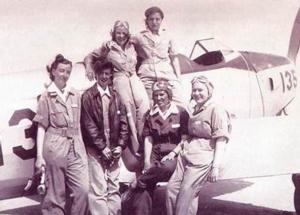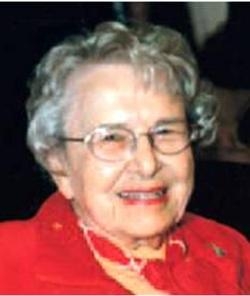Estate Of Dorothy Ebersback Will Establish Center For Flight
Nursing
A pioneering female aviator who served her country during World
War II has made a gift to Case Western Reserve University's Frances
Payne Bolton School of Nursing — a gift that combines her
love of flight and her dedication to nursing. Alumna Dorothy E.
Ebersbach, who passed away Nov. 14, has pledged $2 million to
establish the Dorothy Ebersbach Academic Center for Flight Nursing.
The center will expand on the flight nursing program's mission of
training graduate-level nursing students to provide critical,
on-site care during emergencies and transport to medical
facilities.
Ebersbach On Far Right

"This generous gift will reinforce the Frances Payne Bolton
School of Nursing's status as a leader in flight nurse education
and research," says Mary Kerr, dean of the Frances Payne Bolton
School of Nursing. "Dorothy Ebersbach was a true innovator, which
makes her support for this cutting-edge program so
appropriate."
Ebersbach, a Pomeroy, Ohio, native who was born Dec. 9, 1914,
led an extraordinary life. In 1943, after earning her pilot's
license she applied to the Women Airforce Service Pilots. She was
one of just more than 1,000 women selected to report for duty.
These young women were the first trained to fly American military
aircraft. They ran non-combat missions — ferrying new planes
long distances from factories to military bases and testing newly
overhauled aircraft, among other duties. Thirty-eight WASP fliers
lost their lives while serving during the war.
The WASP was disbanded in 1944, but members were considered
civilians rather than military personnel; they were not granted
veteran status until the 1970s. In 2009, however, Ebersbach and her
peers received the Congressional Gold Medal for their brave
service. At the time, Ebersbach said, "I was surprised. It was
really a magnificent honor. It was more than I expected to
receive."
Such humility and commitment to service were hallmarks of
Ebersbach's life. She chose a career as a nurse and graduated from
the Frances Payne Bolton School of nursing in 1954. Upon earning
her degree, she went to work for the Hillsborough County Health
Department in Tampa, Fla., where she worked in the field of public
health until her retirement in 1975.
Dorothy Ebersbach 2005 Photo

When an opportunity arose to give to the flight nursing program,
Ebersbach was thrilled about the opportunity to support a program
that was such a good personal fit for her, said Gayla Russell, a
longtime friend to Ebersbach and a co-trustee of her estate. "The
flight nursing program at Case Western Reserve embodies Dorothy's
spirit and that of her generation," Russell said.
The flight nursing center at the school of nursing is a master's
level program requiring advanced practice clinical courses, a
concentration in flight nursing and participation in an internship
through the world-renowned Cleveland Clinic, during which students
accompany flight teams on critical transport missions. The program,
the world's first of its kind, was founded in 2002.
"Instead of just transporting patients to the hospital for
treatment, acute care nurse practitioners take the hospital to the
patients for immediate intervention," said Christopher Manacci,
clinical director of the program. "They work at 15,000 to 30,000
feet above the traditional clinical environment and have to think
in non-traditional ways, which is something that Dorothy Ebersbach
did throughout her life." (Images source Case Western Reserve
University)
 ANN's Daily Aero-Term (05.29.25): Terminal Radar Service Area
ANN's Daily Aero-Term (05.29.25): Terminal Radar Service Area ANN's Daily Aero-Term (05.30.25): Very High Frequency (VHF)
ANN's Daily Aero-Term (05.30.25): Very High Frequency (VHF) Aero-News: Quote of the Day (05.30.25)
Aero-News: Quote of the Day (05.30.25) Airborne 05.23.25: Global 8000, Qatar B747 Accepted, Aviation Merit Badge
Airborne 05.23.25: Global 8000, Qatar B747 Accepted, Aviation Merit Badge ANN's Daily Aero-Linx (05.30.25)
ANN's Daily Aero-Linx (05.30.25)




